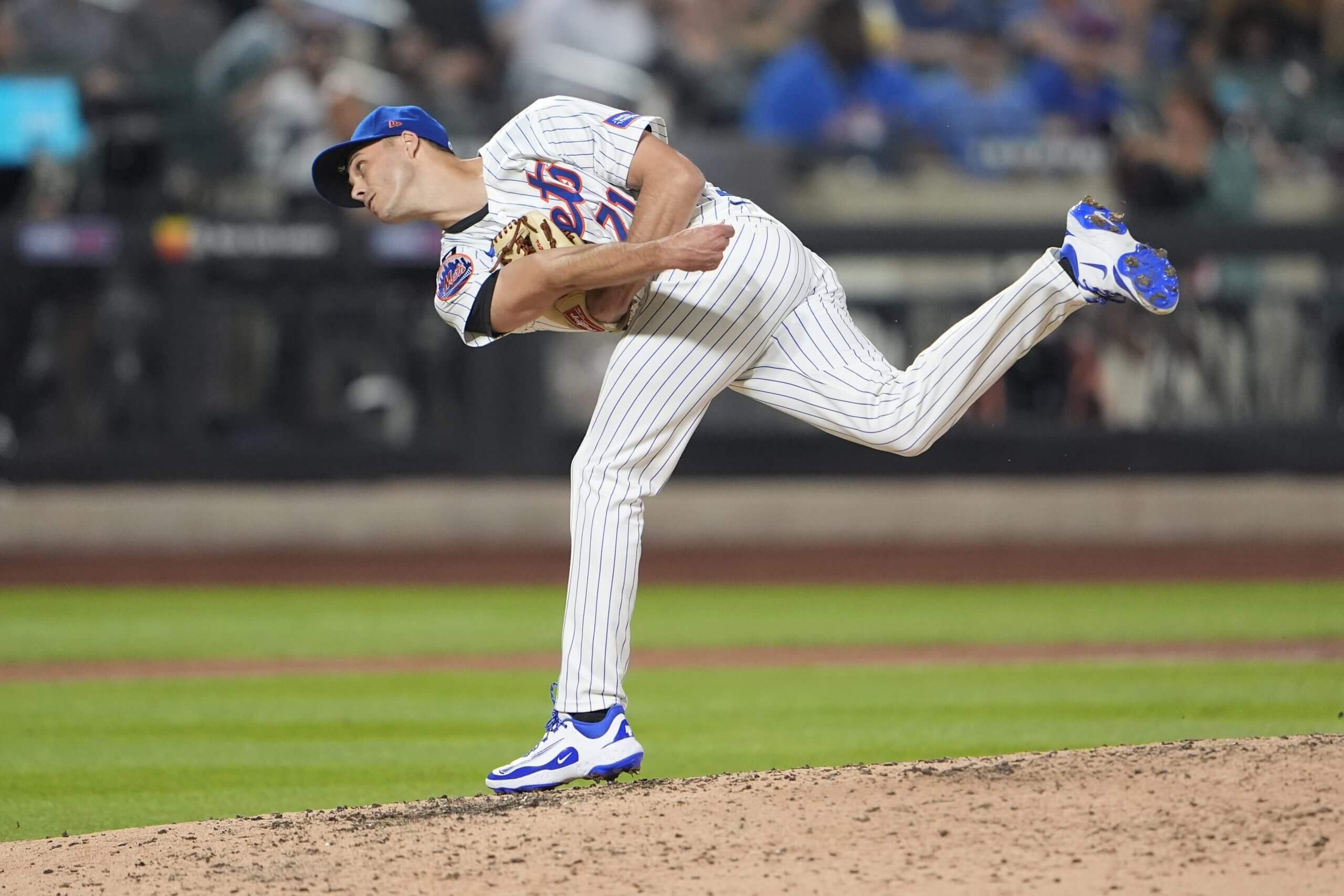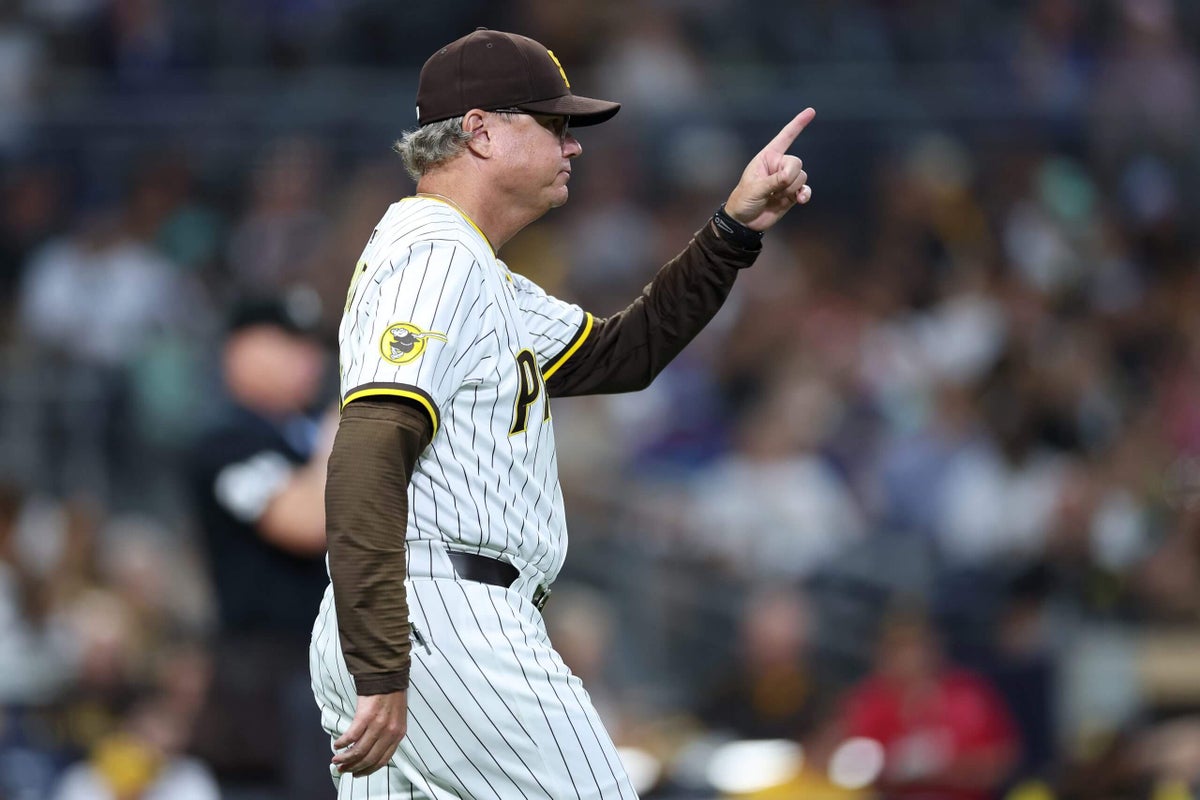Deciding how good a player really is one of those enterprises that happens equally often in barrooms and front offices, with just the same amount of agreement by all involved. But when it comes to bullpens, it’s even more difficult to pin down a player’s true talent. Relievers give us the smallest bits of production by which we could judge them, and yet those looks come in moments that are incredibly important to the outcome of the game.
For example, ask Yankees fans right now, and you might not get the sense that their team’s bullpen is any good. And yeah, going into Tuesday’s games, Yankee relievers had an ERA over five and were the second-worst unit in baseball over the last seven days. Woof.
That can’t really be the right way to figure this out, though.
“What have you done for me lately?” is a fine question for a fan to ask, particularly when they are reacting to a poor run of play, but the Angels ‘pen is not twice as good as the Yankees ‘pen simply because they have been that good over the last seven days.
Looking backwards has its limits, but let’s at least acknowledge that some of these bullpens have changed a ton since the trade deadline, and that seven days is not enough data to determine which bullpens are the best. Here are three bullpens that are candidates for the best in baseball, with their five best relievers listed, and their full-season numbers. These ‘pens stocked up at the deadline and they are loaded when you look at them this way.
First, let’s start with the Yankees.
Best Relievers, Yankees
NameERAK%BB%Stuff+Location+
5.44
29.9%
10.3%
114
98
2.89
26.5%
7.1%
97
97
2.66
32.5%
6.0%
107
108
3.12
25.1%
12.3%
105
100
2.66
13.1%
6.6%
122
97
3.33
25.1%
8.6%
109
101
Four guys who were primary closers for their teams in the past calendar year, two of whom sit in the high-90s with their fastballs, and pretty much all of them have nasty stuff.
Of course, their collective ERA would look a lot better if it wasn’t dragged down by a 5 in the Devin Williams’ column, so it’s always worth wondering what’s happened to the Yankees’ big offseason acquisition. It’s possible the answer is not much — his stuff, command and fastball velocities are all in-line with his norms, and those are generally predictive. But with a season this bad it’s probably worth pointing out that he’s throwing the changeup as slowly as he’s ever thrown it, and with more drop than ever, and it’s being hit harder than ever. Maybe throwing that thing harder is the answer.
You can look to David Bednar to see how a small problem can rob a full season from a reliever and yet not change their career trajectory too much. Bednar didn’t have a great Yankees debut, but he’s a big stuff pitcher who made a couple small adjustments to get his curveball command back. He can be a great closer for them, but he’s given up more homers away from Pittsburgh so far in his career and if that becomes an issue, Camilo Doval has the kind of stuff that will stay in the ballpark (though he might give up more hits).
Tim Hill’s peripherals don’t scream sustainability, but he’s so funky that he’s kind of the Tyler Rogers of this crew. And Luke Weaver’s stuff is down, but with a changeup like he has, he can get lefties out almost easier than righties.
This is a good bullpen, even if it does have some warts.
Now, let’s move cross-town to the Mets.
Best Relievers, Mets
NameERAK%BB%Stuff+Location+
1.41
37.9%
9.6%
106
93
1.87
19.2%
2.0%
126
104
2.77
27.1%
8.8%
128
94
2.56
28.0%
11.6%
113
97
3.63
27.4%
10.3%
113
87
2.39
27.7%
8.3%
117
95
They had one of the best closers in the game and then they added one of the other best closers in the game in Ryan Helsley, and then they added the funkiest submariner in baseball in Tyler Rogers. According to the Stuff+ leaderboard, which looks at the physical characteristics of a pitch, they added two of the three best relievers in baseball at the deadline.

Rogers gives the Mets’ bullpen a unique look. (Gregory Fisher / Imagn Images)
Is there a weakness? Maybe. This group has a 95 Location+, meaning they have worse-than-average command, even among the reliever population. Edwin Díaz can get a wild hair up his nose, Helsley has the odd struggle with the strike zone, and Gregory Soto has improved over the years, but still has a mediocre walk rate. But if a team takes too many pitches against the Mets, they might just bring in Rogers, who has the best walk rate among qualified relievers in baseball this year.
This a great ‘pen with lots of different looks, which seems important come playoff time.
The Padres made arguably the biggest deadline splash in trading for Mason Miller. Let’s now dive into their ‘pen.
Best Relievers, Padres
NameERAK%BB%Stuff+Location+
4.02
38.8%
11.9%
123
91
2.61
34.9%
11.9%
112
111
2.13
25.8%
5.1%
120
99
3.17
25.9%
6.9%
112
105
1.82
24.7%
10.6%
103
92
2.68
29.6%
8.4%
113
100
They took the No. 1 reliever in terms of 100+ mph fastballs and added him to a ‘pen with the 10th-place guy, so you know this ‘pen will do well by stuff metrics. They have the highest strikeout rate of these three bullpens, and the second-lowest walk rate, and strikeout-minus-walk rate is one of the best predictors of future pitching success.
Is there anything wrong with Miller? While Williams with the Yankees has a seen a large downturn in strikeout rate, Miller is still striking out nearly 40 percent of the batters he sees, with more velocity this year than last though, and a better shape on his fastball. His inflated ERA compared to last year might carry a relatively simple explanation: ERA is not predictive, and he’s doing everything else well, and if there’s anything he can do to be better, it’s to cut down on waste fastballs. He’s nearly doubled his rate from last year, and those pitches are easy to take.
Well, relatively easy to take. He still sits 101 mph. Add him to what might have been the best bullpen in baseball before the deadline, and you’ve got your presumptive answer on the titular question.
But hold on. We’re still looking backwards, to some degree — we are trying to look backwards at predictive numbers, but we are still looking backwards. The best way to sum up the true talent of a player is actually to look at their projections and look forward. After all, if we’re asking how good a player is right now we are really asking how good he’ll be the next time out. And projections weigh all the different stats we are looking at and try to make the best sense of them in terms of weighing the most predictive elements of their stat lines, so that’s another reason to use them.
Using the OOPSY projections on FanGraphs that incorporate all the stats we’ve seen above, and only for the top five relievers, so that we compare only the “A” bullpens, here are the best bullpens in baseball going forward, sorted by ERA.
The Best Bulllpens in Baseball
TeamWARK-BB%ERA
1.2
18.9%
2.96
1.3
18.9%
2.98
1.4
20.5%
3.00
1.0
16.3%
3.30
1.1
16.8%
3.36
Gotta love a good surprise result. The Mariners have elite relievers in Andrés Muñoz and Matt Brash, some underrated ones in Gabe Speier and Caleb Ferguson, but that’s only part of why the end up ranked first by projected ERA. Of course some part of it is the park, as they play in the No. 1 pitchers’ park in baseball, according to Statcast park factors.
Wins Above Replacement has its flaws, particularly for pitchers, but it does account for this sort of thing. So once you consider park factors and look at the projected WAR category, you’re probably circling the Mets or Padres for the best bullpen in baseball despite this ranking by projected ERA. And fans in Philadelphia (1.3 projected WAR) and Houston (1.2) can enter the chat if they’d like.
But all this is in the end is a fun way to waste time until the next game. Then we’ll find out which bullpen really shuts them down, and which one melts down and loses the game. And then we can start arguing all over again.
(Top photo: Sean M. Haffey / Getty Images)

